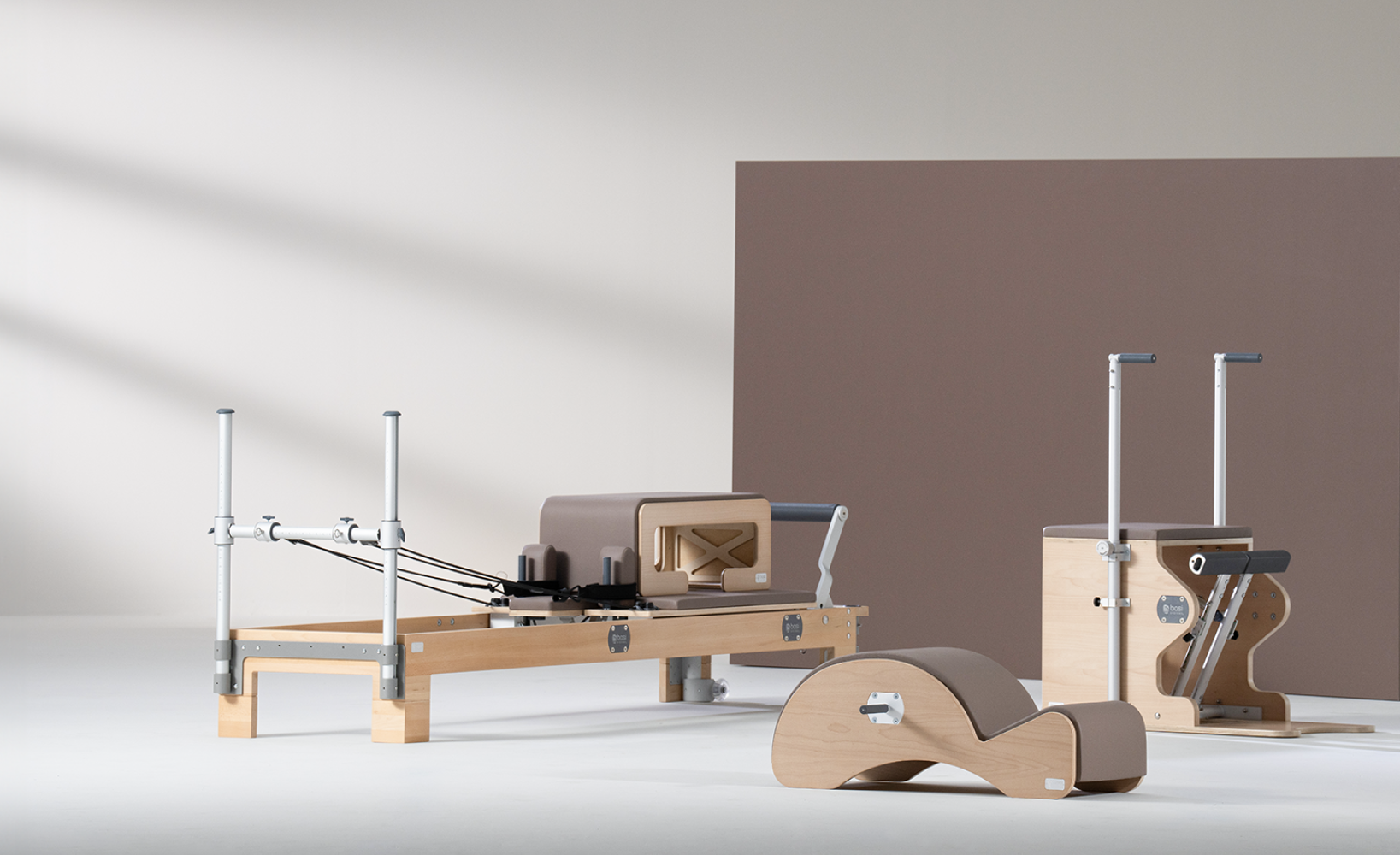A Pilate's studio is never complete without a BASI Systems Wunda Chair. This versatile exercise equipment supports multiple workouts that strengthen your clients' core, arms, glutes, and legs. Find out what the BASI Systems Wunda Chair is and the features that make it a great addition to your new Pilates studio.
What Is the BASI Systems Wunda Chair?
The BASI Systems Wunda Chair is a backless chair with two main components — a padded seat and a pedal. Working out on this chair is straightforward. Pilates enthusiasts sit, stand, or lie on the padded seat and engage the spring with their hands and legs. With the Wunda Chair, your studio can offer footwork, child's pose, stretches, roll down, and full pike workouts.
Besides versatility, BASI's Wunda Chair stands out for its innovative pedal design, which can convert from connected to split. Moreover, BASI designed the chair's pedal to facilitate smooth transitions between resistance settings. The chair's adjustable handle height accommodates users of various heights.
Brief History of the Wunda Chair
The Wunda Chair, one of the first Pilates apparatuses to use springs, was invented by Joseph Pilates in 1945. The founder designed this equipment to intensify the workouts for strengthening the upper body, spine, pelvis, lower back, and abdomen.
Joseph Pilate's first Wunda Chair was a simple piece of equipment with a seat, pedal, and springs. However, the chair has since undergone various transformations to make it more comfortable and effective.
Key Features of the BASI Systems Wunda Chair
The BASI Systems Wunda Chair is a pacesetter when it comes to construction. Not surprisingly, this chair has the prestigious A' Design Award, an attestation to its outstanding design. Other top features that Pilate studio owners love about this piece of equipment include:
Non-Skid Surfaces
BASI Systems' Wunda Chair features non-skid surfaces, especially on the pedal. The surfaces provide a secure grip, minimizing the chances of slipping when users are engaged in footwork or stretches.
Silicon Wheels
BASI Systems understands that Pilate studio operators may want to move their chairs frequently, particularly in studios with tight space. For this reason, they equipped it with silicone wheels to help move the chair quickly and with ease.
Resistance System
The BASI Systems Wunda Chair boasts an innovative resistance system that eliminates the need to remove springs for resistance adjustment. The innovative system allows for quick and effortless tension adjustments.
Non-Slip Padded Handles
Featuring non-slip padded handles, this chair provides a secure and comfortable grip during Pilate's sessions. Additionally, Pilate studio owners can adjust the handles' height in increments of 6.5 centimeters.
Higher Pedal Position
The higher pedal position on the BASI Systems Wunda Chair provides greater mobility during exercises. With such mobility, it’s highly effective in developing your clients' core strength and balance.
Compatibility With F2
With mindfulness in building your equipment collection, BASI Systems created a Wunda Chair that allows for seamless integration with F2 systems. This compatibility enhances the equipment's efficacy in Pilate's workouts. In particular, BASI's F2 system facilitates easy fine-tuning of resistance levels, promoting optimal muscle engagement.
Enhance Your Pilates Studio With a BASI Systems Wunda Chair
A BASI Systems Wunda Chair should be one of the first pieces of equipment to add to your new Pilates studio. This chair features an award-winning design and functionality that makes a good first impression. It can also help you build a loyal customer base right from the start.
To order the BASI Systems Wunda Chair, visit bodynetworx.com or contact us to speak with one of our experts.





Share:
Celebrate Earth Day: Sustainability Tips for Pilates Studios
How To Set Up an Efficient Pilates Studio With Small Space